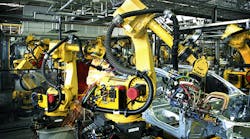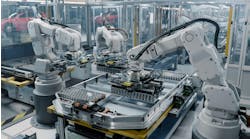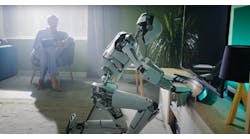With industrial robots, you can find a wide range of applications, including welding, painting, assembly, disassembly, pick and place, packaging and labeling. The list of possibilities goes on and on.
A Cartesian coordinate robot is one where the mechanical parts of the machine move in a straight line and at right angles to each other. This means that, instead of moving in a circle like many other types of robots, they move in an orderly fashion. One reason for the popularity of Cartesian robots is because of the simplified control arm, one of the robot's many advantages. As a result, the Cartesian robot is very reliable and precise when it operates in three-dimensional space. A Cartesian robot is particularly useful for horizontal motion, and this can be very important for any type of stacking bin, as it ensures the contents are stable and don't spill or topple over. A majority of Cartesian coordinate robots use a combination of serial and parallel-connected links. Cartesian coordinate robots are commonly used for computer-numerical-control (CNC) machining, 3D printing, plotters, pick-and-place machines and overhead gantry cranes.
Also read: Autonomous mobile robots’ value is more than just speed
The selective compliance assembly robot arm (SCARA) is an articulated robot arm that can be programmed to perform a variety of tasks. The SCARA is fairly compliant in the x-y direction but rigid in the z direction. This lets the SCARA become handy for several assembly jobs. The SCARA is also really useful in tight spaces. The two-joint arm allows for great mobility even when loading and unloading containers. A SCARA robot is usually quicker than Cartesian robots of comparable size. The SCARA arm can also be pedestal-mounted and has a small footprint, allowing for a very efficient installation process. The ability to mount the arm in a range of ways makes it possible to increase its efficiency. The most prevalent use of the SCARA robot is in pick-and-place assembly and, when it comes to repeatability, the SCARA can attain tolerances of 10 microns, compared to 20 microns for six-axis robots. It also bears a modest payload, ranging between 2 and 10 kg.
Delta robots are a type of parallel robot. With three arms linked to joints on a base, the delta robot's core concept is to employ parallelograms to limit end-effector movement to pure translation—no rotation—in the x, y or z direction. The actuators are positioned on the delta robot, which is mounted above the workspace. Coming from the base, each arm is connected to a small triangle platform. The triangle platform will move in one of three directions—x, y or z, depending on the input connections.
Actuation can be done in a variety of ways. Linear actuators and rotational actuators provide a range of options. The robot's arms are built of lightweight composite material, and the moving components have low inertia, since the actuators are all placed in the base. This enables very fast speeds and accelerations. Delta robots are fast and used in the packaging, medical and pharmaceutical sectors. They are also used to assemble precision electronic components.
Articulated robots have rotary joints, allowing them to move in multiple directions. A more complex articulated robot may have 10 or more of these joints. An electric motor is typically used to power the articulated robots. The automobile sector is the primary driver of the articulated robot market, with welding, assembling, sealing, material handling, picking, cutting, painting and spraying comprising many of the tasks that articulated robots are employed for in that sector.
They can provide versatility due to the broad spectrum of applications they perform. Like all robots, articulated robots use many sensors to achieve effective functioning in industrial automation production processes. You will find that the work envelope size of any industrial robot is important. This is one of the major advantages to articulated-arm robots—they are able to use most of their work envelope, which can be a deciding factor when choosing between different models.
One of the limitations of articulated robots is their velocity. They are not as efficient as other types of robots that can perform tasks at a faster rate. A complex kinematics is required to govern the motion of articulated robots due to their numerous joints and degrees of freedom. Articulated robots can be mounted on bases, linear slides and upside-down.
By using robots, manufacturers are helping to reduce the number of injuries in the workplace by both removing humans from dangerous and repetitive tasks and providing a means for lifting heavy objects safely.






